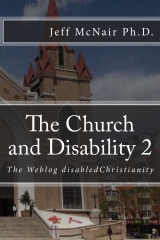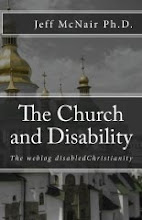 In the movie Amistad, the story is told of how the African slave receives a Bible, and through studying the pictures learns the basics of the story of the life of Jesus (pictures from Hollywood Jesus website). Although there was a language barrier and a cultural barrier, the message could be shared via pictures.
In the movie Amistad, the story is told of how the African slave receives a Bible, and through studying the pictures learns the basics of the story of the life of Jesus (pictures from Hollywood Jesus website). Although there was a language barrier and a cultural barrier, the message could be shared via pictures.I suspect this is perhaps one reason for pictures being placed in Bibles...they assist the reader to visualize the subjects of the text.
But what if you couldn't read at all? How might you be able to study the Bible? It occurs to me that the use of good pictures might be very helpful. Carefully selected pictures, be they photographs, or paintings could be taught as Christian study tools for people with learning disabilities to cognitive disabilities. Those who can't read, or perhaps can't even understand Bible passages being read, might be taught to study pictures.
 Should a teacher choose to use such a strategy to teach Biblical content, it strikes me that there are several important points to consider. First, the picture will be THE Bible to the person studying the picture. If the picture is not Biblically as accurate as possible, people will misunderstand in the same manner as people would misunderstand if they read a poor translation of a passage. Biblical correctness must be ensured as much as is possible. Second, the picture should be detailed to teach subtleties of a particular part of the Bible. Henri Nouwen authored Return of the Prodigal Son, which is basically about what he learned from studying Rembrandt's painting, Return of the Prodigal Son. It is fascinating the depth of meaning he learned just from studying the painting. Third, the picture should be appropriate for the age of the individual using the picture as a Biblical study aide. We should avoid cartoons, or unrealstic representations because the unrealistic nature of the pictures will communicate that the story is perhaps unreal. Persons with cognitive disabilities are very much realists and therefore must be confronted with realistic images. They can be very sensitive to the age inappropriateness of materials used with them instructionally. Fourth, an engaging picture will bring in those in the enviornment to assist the person understand the meaning within the picture. If I am studying a cartoon while sitting at Starbucks drinking my coffee, people will think me juvenile. However, if
Should a teacher choose to use such a strategy to teach Biblical content, it strikes me that there are several important points to consider. First, the picture will be THE Bible to the person studying the picture. If the picture is not Biblically as accurate as possible, people will misunderstand in the same manner as people would misunderstand if they read a poor translation of a passage. Biblical correctness must be ensured as much as is possible. Second, the picture should be detailed to teach subtleties of a particular part of the Bible. Henri Nouwen authored Return of the Prodigal Son, which is basically about what he learned from studying Rembrandt's painting, Return of the Prodigal Son. It is fascinating the depth of meaning he learned just from studying the painting. Third, the picture should be appropriate for the age of the individual using the picture as a Biblical study aide. We should avoid cartoons, or unrealstic representations because the unrealistic nature of the pictures will communicate that the story is perhaps unreal. Persons with cognitive disabilities are very much realists and therefore must be confronted with realistic images. They can be very sensitive to the age inappropriateness of materials used with them instructionally. Fourth, an engaging picture will bring in those in the enviornment to assist the person understand the meaning within the picture. If I am studying a cartoon while sitting at Starbucks drinking my coffee, people will think me juvenile. However, if I am studying a famous painting, people will be engaged by my interest, perhaps ask questions, or perhaps provide interpretations which might help me in my understanding, my study of theological concepts via the picture. Fifth, in the same way we help people to pray through scripture, we can help people to pray through the pictures, so again using the example of the Prodigal son, we pray to be forgiving like the father or we pray to be humble, or asking for forgiveness like the son. People's memory's are prompted with such pictures. Sixth, is the potential universal design benefits of the pictures. It is often the case that accommodations made for people with disabilities don't just benefit them. An example is curb cuts for wheelchairs. Curb cuts are also great for bicycles, or people who just have trouble stepping down from the height of a curb. Designed for wheelchairs, they benefit others. Teaching students to study pictures has the potential of benefitting everyone's understanding of the Bible in the way that it assisted a priest and scholar such as Henri Nouwen. (Return of the Prodigal Son picture from 123 posters.com).
I am studying a famous painting, people will be engaged by my interest, perhaps ask questions, or perhaps provide interpretations which might help me in my understanding, my study of theological concepts via the picture. Fifth, in the same way we help people to pray through scripture, we can help people to pray through the pictures, so again using the example of the Prodigal son, we pray to be forgiving like the father or we pray to be humble, or asking for forgiveness like the son. People's memory's are prompted with such pictures. Sixth, is the potential universal design benefits of the pictures. It is often the case that accommodations made for people with disabilities don't just benefit them. An example is curb cuts for wheelchairs. Curb cuts are also great for bicycles, or people who just have trouble stepping down from the height of a curb. Designed for wheelchairs, they benefit others. Teaching students to study pictures has the potential of benefitting everyone's understanding of the Bible in the way that it assisted a priest and scholar such as Henri Nouwen. (Return of the Prodigal Son picture from 123 posters.com).I have actually used Return of the Prodigal Son with adults with cognitive disabilities with some success. I used the picture and taught them the story. I would then ask questions about what they learned using the picture as a prompt. People in the class would view the pictures and be able to relate various points I was attempting to communicate.
So I am hoping to see curriculum developed (not necessarily by me) that uses these and other principles to teach spiritual truth to those who would perhaps like to study to some degree, but are unable to do so because of their inability to read or listen to Scripture. Well chosen, carefully chosen, pictures chosen with consultation from someone like a church pastor to ensure they properly represent the passage being taught could prove very useful in teaching persons with cognitive disabilities.
McNair











2 comments:
I think the idea is a good one but I do have some concerns. Interpreting pictures such as art is very relative the artist might have one thing in mind while the people who view it get something completely different. You also made a point to bad pictures being the equivalent to a poorly translated bible and I honestly can’t see how you could translate the whole book even with great pictures because you’re trying to evoke thought when I feel most art evokes different thought but similar emotion. Maybe some of the stories could be done because even a child’s picture book can lead you where you’re going but in general I think it will get lost in translations. Having said that as an aid during instruction I think it would be very useful to help keep the people trying to learn the stories a point of reference or a place to relate to what’s happening but I don’t think that it would be good by itself.
With the increasing popularity of graphic novels, the juvenile reputation of comic books is rapidly decreasing. They could be a great teaching tool because they can be easily duplicated as well as tailored for a specific population.
For some, photos can be harder to read than simple pictures. I found that out when working with severely disabled upper elementary students. By strickly adhering to the normalization concept we can throw the baby out with the bath water. Yes, they will be observably more "normal", but will we be giving them what they need?
Post a Comment